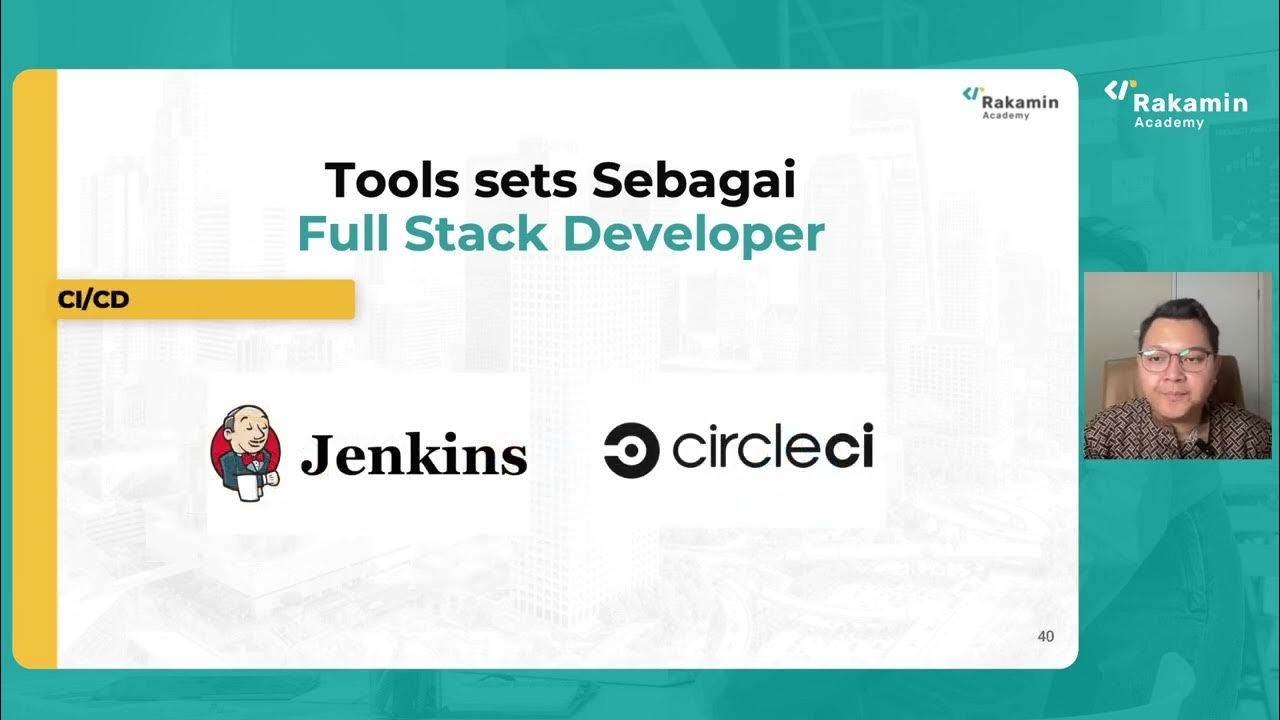My Complete Tech Stack For Full-Stack development - 2024
Summary
TLDRIn this video, a seasoned software developer shares their tech stack for full-stack web development. They primarily use React with Next.js for the front end, citing Next.js's powerful features like server-side rendering. For the back end, they favor PHP and MySQL, preferring API-driven development for scalability and flexibility. Hosting is done through Vercel for front-end apps and Hostinger for the back end. The developer also discusses using Tailwind CSS, Font Awesome for icons, Firebase for real-time updates, and AWS S3 for storage, while stressing the importance of experimenting with different frameworks.
Takeaways
- 💻 The speaker is a full stack developer with experience in both mobile and web app development.
- ⚛️ For front-end development, the speaker primarily uses React and Next.js, praising Next.js for its enhanced features like server-side rendering and app routing.
- 🌐 Although the speaker uses React and Next.js, they suggest beginners experiment with various front-end frameworks like Vue.js, React, and Angular before choosing one.
- 📂 For back-end development, the speaker prefers PHP with MySQL due to their familiarity with it and the native support for SQL queries in PHP.
- 🔗 The speaker follows an API-driven development approach, allowing flexibility to reuse API endpoints across different platforms, such as web and mobile applications.
- ☁️ Hosting for front-end apps is done using Vercel due to its ease of deployment, while Hostinger is used for back-end services with PHP and MySQL.
- 🔐 For authentication, the speaker has switched to using NextAuth.js, simplifying the process with support for social logins and session management.
- 💡 The speaker recommends Tailwind CSS for front-end styling, as it saves time by avoiding unnecessary CSS code.
- 🔥 Firebase is primarily used for real-time communication in the speaker's apps, particularly for email verification and real-time updates.
- 👨💻 The speaker emphasizes the importance of trying out different tools and frameworks to find what works best, advising developers not to limit themselves to what others recommend.
Q & A
What tech stack does the speaker primarily use for web app development?
-The speaker primarily uses React for the front end and Next.js as the framework for web app development. On the backend, they use PHP and MySQL, following an API-driven development approach.
Why does the speaker prefer Next.js over plain React for web development?
-The speaker prefers Next.js because it supercharges React with additional features like server-side rendering, app routing, and server actions, while still being heavily based on React. The transition from React to Next.js was smooth, according to the speaker.
What front-end frameworks does the speaker recommend for beginners?
-The speaker suggests that beginners experiment with different front-end frameworks and not just choose one based on recommendations. However, they mention that Vue.js is the easiest to learn, followed by React and then Angular, which has a steeper learning curve.
Why does the speaker prefer PHP over Node.js for backend development?
-The speaker prefers PHP because they were exposed to it before Node.js, and it feels familiar. Additionally, PHP natively supports SQL connections and queries, making it more straightforward for database-related tasks compared to JavaScript, which requires third-party packages to communicate with SQL databases.
What hosting services does the speaker use for their front-end and backend applications?
-The speaker hosts their front-end applications on Vercel, which integrates seamlessly with Next.js and GitHub for easy deployment. For backend services, they use Hostinger, which provides PHP hosting and a free MySQL database.
What benefits does the speaker find in API-driven development?
-The speaker values API-driven development because it allows for reuse of the same API endpoint across different applications. For example, they can build a mobile app in the future that uses the same API as the web application, making integrations with other services like Slack or Discord easier.
What authentication methods does the speaker use, and why?
-The speaker uses NextAuth.js for authentication, which supports traditional email/password login and social logins like Google, GitHub, and Microsoft. They appreciate how it simplifies session management and takes away the stress of manually developing authentication flows.
What are some other tools and libraries the speaker uses in web development?
-The speaker uses Tailwind CSS for styling, as it saves time by eliminating the need to write unnecessary CSS code. They also use Font Awesome for adding icons to their web apps, and AWS S3 for storage solutions.
How does the speaker use Firebase in their projects?
-The speaker uses Firebase for real-time communication, such as monitoring user verification statuses during email verification processes. They also use it for notifications when developing mobile applications.
What advice does the speaker offer for developers choosing a front-end framework?
-The speaker advises developers to experiment with various frameworks and not choose one solely based on recommendations. Each framework has its pros and cons, and developers should select the one they feel most comfortable working with.
Outlines

This section is available to paid users only. Please upgrade to access this part.
Upgrade NowMindmap

This section is available to paid users only. Please upgrade to access this part.
Upgrade NowKeywords

This section is available to paid users only. Please upgrade to access this part.
Upgrade NowHighlights

This section is available to paid users only. Please upgrade to access this part.
Upgrade NowTranscripts

This section is available to paid users only. Please upgrade to access this part.
Upgrade Now5.0 / 5 (0 votes)





